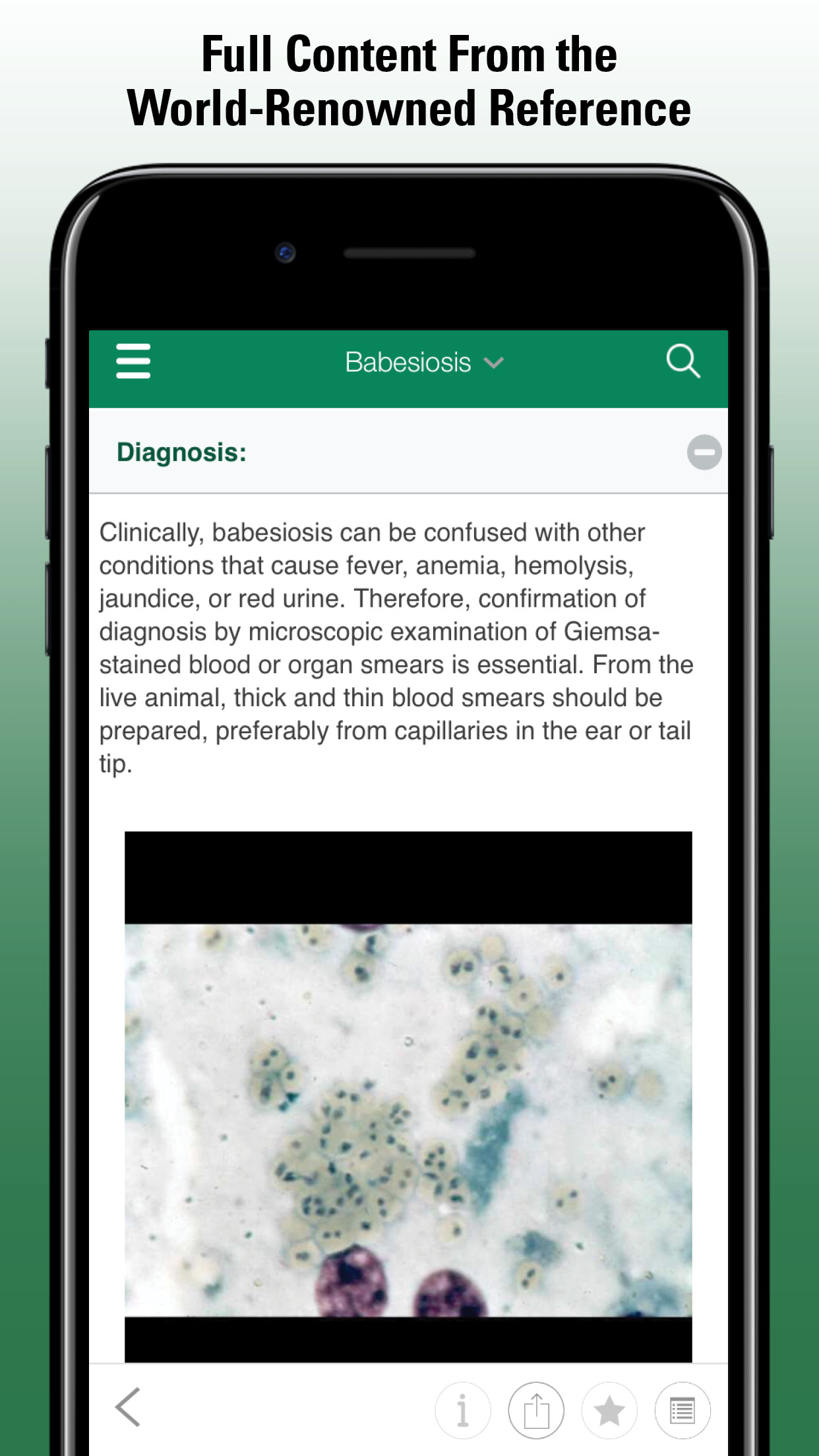Puncture Wounds of the Foot in Horses
(Subsolar abscess, Septic navicular bursitis)
- Lameness in Horses
- Overview of Lameness in Horses
- The Lameness Examination in Horses
- Imaging Techniques in Equine Lameness
- Arthroscopy in Equine Lameness
- Regional Anesthesia in Equine Lameness
- Disorders of the Foot in Horses
- Osseous Cyst-like Lesions in the Distal Phalanx in Horses
- Bruised Sole and Corns in Horses
- Canker in Horses
- Fracture of Navicular Bone in Horses
- Fracture of Distal Phalanx in Horses
- Keratoma in Horses
- Laminitis in Horses
- Navicular Disease in Horses
- Pedal Osteitis in Horses
- Puncture Wounds of the Foot in Horses
- Pyramidal Disease in Horses
- Quittor in Horses
- Quarter Crack in Horses
- Scratches in Horses
- White Line Disease in Horses
- Sheared Heels in Horses
- Sidebone in Horses
- Thrush in Horses
- Disorders of the Pastern and Fetlock
- Fractures of the First and Second Phalanx in Horses
- Fractures of the Proximal Sesamoid Bones in Horses
- Osteoarthritis of the Proximal Interphalangeal Joint in Horses
- Palmar/Plantar Metacarpal/Metatarsal Nonadaptive Bone Remodeling in Horses
- Sesamoiditis in Horses
- Chronic Proliferative Synovitis in Horses
- Digital Sheath Tenosynovitis in Horses
- Disorders of the Metacarpus in Horses
- Tendinitis in Horses
- Suspensory Desmitis in Horses
- Inferior Check Desmitis in Horses
- Bucked Shins in Horses
- Exostoses of the Second and Fourth Metacarpal Bones in Horses
- Fractures of the Small Metacarpal (Splint) Bones in Horses
- Fracture of the Third Metacarpal (Cannon) Bone in Horses
- Disorders of the Carpus in Horses
- Fracture of the Carpal Bones in Horses
- Subchondral Bone Disease of the Third Carpal Bone in Horses
- Tearing of the Medial Palmar Intercarpal Ligament in Horses
- Osteoarthritis of the Carpus in Horses
- Distal Radial Exostosis and Osteochondroma of the Distal Radius in Horses
- Carpal Hygroma in Horses
- Rupture of the Common Digital Extensor Tendon in Horses
- Disorders of the Shoulder in Horses
- Developmental Diseases of the Shoulder in Horses
- Fractures of the Shoulder in Horses
- Bicipital Bursitis in Horses
- Infection of the Shoulder in Horses
- Suprascapular Neuropathy in Horses
- Osteoarthritis of the Shoulder in Horses
- Disorders of the Elbow in Horses
- Developmental Orthopedic Disease in the Elbow of Horses
- Fractures of the Elbow in Horses
- Osteoarthritis of the Elbow in Horses
- Collateral Ligament Injury in the Elbow of Horses
- Disorders of the Metatarsus in Horses
- Bucked Shins/Dorsal Cortical Fractures of the Third Metatarsal Bone in Horses
- Exostoses of the Metatarsal Bones in Horses
- Diaphyseal Fracture of the Third Metatarsal Bone in Horses
- Incomplete Longitudinal Fractures of the Plantar Aspect of the Third Metatarsal Bone in Horses
- Focal Bone Reaction and Avulsion Fractures of the Third Metatarsal Bone in Horses
- Fractures of the Second and Fourth Metatarsal Bones in Horses
- Enostosis-like Lesions of the Third Metatarsal Bone in Horses
- Disorders of the Tarsus in Horses
- Failure of Ossification of the Distal Tarsal Bones in Horses
- Osteoarthritis of the Distal Tarsal Joints in Horses
- Osteoarthritis of the Talocalcaneal Joint in Horses
- Osteoarthritis of the Tarsocrural Joint in Horses
- Synovitis/Capsulitis of the Tarsocrural Joint in Horses
- Osteochondrosis of the Tarsocrural Joint in Horses
- Osteitis of the Calcaneus in Horses
- Fractures of the Distal Tarsal Bones in Horses
- Fracture of the Talus in Horses
- Fracture of the Fibular Tarsal Bone (Calcaneus) in Horses
- Fracture of the Lateral Malleolus of the Tibia in Horses
- Tarsal Joint Luxation in Horses
- Desmitis of the Collateral Ligaments of the Tarsus in Horses
- Rupture of the Fibularis (Peroneus) Tertius in Horses
- Stringhalt
- Curb in Horses
- Disorders of the Tarsal Sheath in Horses
- False Thoroughpin in Horses
- Luxation of the Superficial Digital Flexor Tendon from the Tuber Calcanei in Horses
- Gastrocnemius Tendinitis in Horses
- Calcaneal Bursitis in Horses
- Capped Hock
- Disorders of the Stifle in Horses
- Osteochondrosis of the Stifle in Horses
- Subchondral Cystic Lesions in Horses
- Meniscus and Meniscal Ligament Injuries in Horses
- Cranial and Caudal Cruciate Ligament Injuries in Horses
- Collateral Ligament Injuries in Horses
- Intermittent Upward Fixation of the Patella and Delayed Patella Release in Horses
- Fragmentation of the Patella in Horses
- Patellar Luxation in Horses
- Patellar Ligament Injuries in Horses
- Gonitis and Osteoarthritis in Horses
- Chondromalacia of the Femoral Condyles in Horses
- Fractures of the Stifle in Horses
- Disorders of the Hip in Horses
- Luxation of the Coxofemoral Joint in Horses
- Pelvic Fracture in Horses
- Osteoarthritis and other Coxofemoral Joint Diseases in Horses
- Disorders of the Back and Pelvis in Horses
- Spinal Processes and Associated Ligaments in Horses
- Articular Process−Synovial Intervertebral Articulation Complexes in Horses
- Vertebral Bodies and Discs in Horses
- Muscle Strain and Soreness in Horses
- Lumbosacral Junction Abnormalities in Horses
- Sacroiliac Joint Abnormalities in Horses
- Developmental Orthopedic Disease in Horses
- Osteochondrosis in Horses
- Physitis in Horses
- Flexural Deformities in Horses
Puncture wounds are common in horses and are the most common cause of subsolar sepsis. Most puncture wounds result only in sepsis of the subsolar soft tissue (ie, subsolar abscess) but can be catastrophic when the puncture is in the frog and travels deep enough to enter synovial structures such as the navicular bursa, the distal interphalangeal joint, or possibly the deep digital flexor tendon sheath.
Puncture of the sole by a foreign body is associated with introduction of pathogenic microorganisms that lead to subsolar abscess formation. Lameness is usually severe; the degree of lameness may be similar to that of a fracture. The horse may stand pointing the affected foot. There is commonly a prominent digital pulse in the affected limb. If allowed to progress, the abscess may travel proximally to rupture at the coronary band; there will usually be edematous swelling proximal to the coronary band before rupture. Diagnosis is made by confirming the site of pain by pulling the shoe, using hoof testers, and picking or paring the suspect area to locate the foreign body or its dark tract. If a foreign body is found in the frog, it may be best to obtain a lateral radiograph of the foot to assess the structures penetrated before removing the offending object. If a tract is found in the frog, it should be probed and a radiograph taken with the probe in place. Because puncture wounds in or near the frog commonly enter a synovial structure, they constitute a serious problem requiring rapid, aggressive diagnosis and therapy. If a synovial structure is entered, the horse should be placed on broad-spectrum antibiotics and transported to a facility capable of advanced surgical and medical techniques; the affected synovial structure should be lavaged with sterile polyionic solution as soon as possible (within hours).
If a puncture wound is noted in the solar area, ensuring adequate drainage from the site helps prevent abscess formation. If there is a suspected abscess but no tract is found, the foot can be poulticed in an attempt to promote organization of the abscess for localization. If a tract is found that leads to a subsolar abscess, adequate drainage should be established with a hoof knife; the drainage hole should be kept as small as possible (~0.5–1 cm diameter) to avoid a prolapse of sensitive corium. Some farriers and veterinarians prefer to drain the abscess through the hoof wall (instead of the sole) if possible. Once the abscess has been entered, it should be probed to determine its extent; a palmar digital nerve block will usually be necessary before probing and lavage of the area. If the abscess underruns a large area of the foot, another small ingress/egress hole can be made at the farthest extent of the abscess from the original entry point, and lavage can be performed by placing a 14-gauge catheter or teat cannula into the affected subsolar space and flushing with saturated Epsom salt solution (made by adding Epsom salts to boiling water or saline until some salt crystals sit on the bottom of the container and will not go into solution). If a chronic subsolar abscess has developed, this treatment may have to be repeated daily to every other day for several treatments. The foot should be protected until there is full healing/epithelialization of the solar region entered; healing appears to be much more rapid and is easier to treat if the abscess is entered through the wall instead of the sole. All horses with puncture wounds should be immunized against tetanus. Local and systemic antibiotic therapy are not necessary for a sole abscess but should be considered with swelling above the coronary band (indicating septic cellulitis) and must be used aggressively if sepsis of a synovial structure is present.
- Lameness in Horses
- Overview of Lameness in Horses
- The Lameness Examination in Horses
- Imaging Techniques in Equine Lameness
- Arthroscopy in Equine Lameness
- Regional Anesthesia in Equine Lameness
- Disorders of the Foot in Horses
- Osseous Cyst-like Lesions in the Distal Phalanx in Horses
- Bruised Sole and Corns in Horses
- Canker in Horses
- Fracture of Navicular Bone in Horses
- Fracture of Distal Phalanx in Horses
- Keratoma in Horses
- Laminitis in Horses
- Navicular Disease in Horses
- Pedal Osteitis in Horses
- Puncture Wounds of the Foot in Horses
- Pyramidal Disease in Horses
- Quittor in Horses
- Quarter Crack in Horses
- Scratches in Horses
- White Line Disease in Horses
- Sheared Heels in Horses
- Sidebone in Horses
- Thrush in Horses
- Disorders of the Pastern and Fetlock
- Fractures of the First and Second Phalanx in Horses
- Fractures of the Proximal Sesamoid Bones in Horses
- Osteoarthritis of the Proximal Interphalangeal Joint in Horses
- Palmar/Plantar Metacarpal/Metatarsal Nonadaptive Bone Remodeling in Horses
- Sesamoiditis in Horses
- Chronic Proliferative Synovitis in Horses
- Digital Sheath Tenosynovitis in Horses
- Disorders of the Metacarpus in Horses
- Tendinitis in Horses
- Suspensory Desmitis in Horses
- Inferior Check Desmitis in Horses
- Bucked Shins in Horses
- Exostoses of the Second and Fourth Metacarpal Bones in Horses
- Fractures of the Small Metacarpal (Splint) Bones in Horses
- Fracture of the Third Metacarpal (Cannon) Bone in Horses
- Disorders of the Carpus in Horses
- Fracture of the Carpal Bones in Horses
- Subchondral Bone Disease of the Third Carpal Bone in Horses
- Tearing of the Medial Palmar Intercarpal Ligament in Horses
- Osteoarthritis of the Carpus in Horses
- Distal Radial Exostosis and Osteochondroma of the Distal Radius in Horses
- Carpal Hygroma in Horses
- Rupture of the Common Digital Extensor Tendon in Horses
- Disorders of the Shoulder in Horses
- Developmental Diseases of the Shoulder in Horses
- Fractures of the Shoulder in Horses
- Bicipital Bursitis in Horses
- Infection of the Shoulder in Horses
- Suprascapular Neuropathy in Horses
- Osteoarthritis of the Shoulder in Horses
- Disorders of the Elbow in Horses
- Developmental Orthopedic Disease in the Elbow of Horses
- Fractures of the Elbow in Horses
- Osteoarthritis of the Elbow in Horses
- Collateral Ligament Injury in the Elbow of Horses
- Disorders of the Metatarsus in Horses
- Bucked Shins/Dorsal Cortical Fractures of the Third Metatarsal Bone in Horses
- Exostoses of the Metatarsal Bones in Horses
- Diaphyseal Fracture of the Third Metatarsal Bone in Horses
- Incomplete Longitudinal Fractures of the Plantar Aspect of the Third Metatarsal Bone in Horses
- Focal Bone Reaction and Avulsion Fractures of the Third Metatarsal Bone in Horses
- Fractures of the Second and Fourth Metatarsal Bones in Horses
- Enostosis-like Lesions of the Third Metatarsal Bone in Horses
- Disorders of the Tarsus in Horses
- Failure of Ossification of the Distal Tarsal Bones in Horses
- Osteoarthritis of the Distal Tarsal Joints in Horses
- Osteoarthritis of the Talocalcaneal Joint in Horses
- Osteoarthritis of the Tarsocrural Joint in Horses
- Synovitis/Capsulitis of the Tarsocrural Joint in Horses
- Osteochondrosis of the Tarsocrural Joint in Horses
- Osteitis of the Calcaneus in Horses
- Fractures of the Distal Tarsal Bones in Horses
- Fracture of the Talus in Horses
- Fracture of the Fibular Tarsal Bone (Calcaneus) in Horses
- Fracture of the Lateral Malleolus of the Tibia in Horses
- Tarsal Joint Luxation in Horses
- Desmitis of the Collateral Ligaments of the Tarsus in Horses
- Rupture of the Fibularis (Peroneus) Tertius in Horses
- Stringhalt
- Curb in Horses
- Disorders of the Tarsal Sheath in Horses
- False Thoroughpin in Horses
- Luxation of the Superficial Digital Flexor Tendon from the Tuber Calcanei in Horses
- Gastrocnemius Tendinitis in Horses
- Calcaneal Bursitis in Horses
- Capped Hock
- Disorders of the Stifle in Horses
- Osteochondrosis of the Stifle in Horses
- Subchondral Cystic Lesions in Horses
- Meniscus and Meniscal Ligament Injuries in Horses
- Cranial and Caudal Cruciate Ligament Injuries in Horses
- Collateral Ligament Injuries in Horses
- Intermittent Upward Fixation of the Patella and Delayed Patella Release in Horses
- Fragmentation of the Patella in Horses
- Patellar Luxation in Horses
- Patellar Ligament Injuries in Horses
- Gonitis and Osteoarthritis in Horses
- Chondromalacia of the Femoral Condyles in Horses
- Fractures of the Stifle in Horses
- Disorders of the Hip in Horses
- Luxation of the Coxofemoral Joint in Horses
- Pelvic Fracture in Horses
- Osteoarthritis and other Coxofemoral Joint Diseases in Horses
- Disorders of the Back and Pelvis in Horses
- Spinal Processes and Associated Ligaments in Horses
- Articular Process−Synovial Intervertebral Articulation Complexes in Horses
- Vertebral Bodies and Discs in Horses
- Muscle Strain and Soreness in Horses
- Lumbosacral Junction Abnormalities in Horses
- Sacroiliac Joint Abnormalities in Horses
- Developmental Orthopedic Disease in Horses
- Osteochondrosis in Horses
- Physitis in Horses
- Flexural Deformities in Horses





